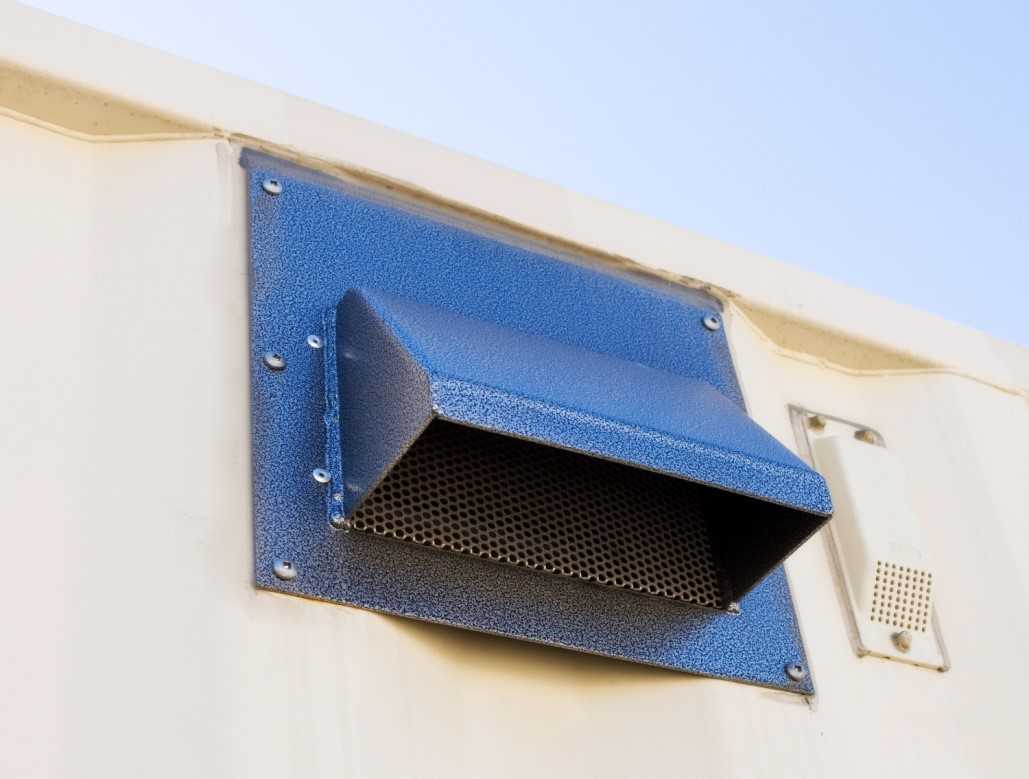
May 06, 2016 By INSTA Container Modification
Filed under: Products
Install Vents - It just makes sense!
It’s no big secret that shipping containers are no longer used just for shipping product across the ocean. In fact, I would dare to say that there are not many times you won’t see a container storing something on your daily drive. They have become a great product to store just about anything you want to keep secure and dry, as well as modify to suit your exact needs.
There is one major flaw in using a shipping container for your everyday storage though. They are designed to be as air tight and water tight as possible. Some newer models have tiny vent holes that are less than an inch in size, but they need to be kept small to avoid water and moisture from getting inside during travel on the ocean. Making sure your container is air and water tight is great for ocean travel, but for storage use on land you’re putting your stored goods, and possibly even your life at risk by not venting your container.
Here are some major issues we see when containers are not adequately vented: read more…
Products ruined from moisture. Moisture build- up is one of the main problems when using a container for storage. If you live in a very humid climate we often see moisture build up on the inside of the roof on containers, sometimes to the point of it almost “raining” inside the container on top of stored goods causing water damage. Recently an Edmonton Alberta company had stored over $100,000 in electronics in a container for a few months, only to open it up and find just about all of it destroyed and not functioning properly due to moisture buildup in the container. By simply adding more ventilation this could have been prevented.
Another cause from moisture build up is what is being stored in the container. Many ski hills and winter sport facilities are now using shipping containers to store their skis and equipment. It all comes in wet with snow and stored in the container in and out all winter. Adding vents will help reduce the moisture in the air and help the melting snow evaporate faster, helping prolong the life of the container and anything stored inside.
Health risks from fumes, possible death. We have seen an increase of stories around North America of people passing out or even dying because of air poisoning from the fumes being built-up from paint, thinners, gas and other various chemicals that are stored inside shipping containers. While it may seem like a good idea to keep all these products locked up, storing them in a container with no way for the fumes to escape can be devastating.
Risk of fire or explosion. When storing chemicals, gas, propane, ATV’s or other recreational vehicles, fumes can build up in a container that is not vented properly. When fumes or gas build up in an air tight container it does not take much for disaster to strike. An example of this happened recently very close to our head office in Kelowna, British Columbia. You can read the news story of this unfortunate preventable accident here; http://www.castanet.net/news/Vernon/125432/Firefighter-s-death-an-accident.
Heat risks. Much like a car on a hot summer’s day, a shipping container can become sweltering hot under the heat of the sun. Heat in a container amplifies the risks to all the above factors mentioned. Adding vents to your container lowers the heat and helps reduce the risk of moisture and fumes building up.
Proper venting. When entering a container on a hot day you can clearly feel the air is warmer, but if you were to put a thermometer on the floor and one by the roof you will see the top is much warmer due to rising heat. The metal floor sitting on the ground creates its own shade actually helping to keep the bottom air cooler. Installing your vents near the top of the container will actually force the hot air out because of the pressure built-up from the hot air rising and with that helps pull the cooler air from the bottom up. It is also important to have more than one vent in a container to help create cross air flow. We usually suggest opposite corners. While a roof turbine vent may seem like a good idea, it can later lead to leaking issues, transport issues and not being able to stack the container in the future if needed. Also, they are easily damaged and will need to be replaced. Installing a side vent removes all the risks associated with a roof top vent.
By increasing your ventilation you will be creating a safer place to store your products and more importantly a saver environment to work in.

Insta Container Modifications wholesales shipping container modification parts and accessories designed to help make your container more secure, safer and easier to use. For more information on all their great products visit them at www.instacontainermodification.com or phone 1.866.647.4353




















